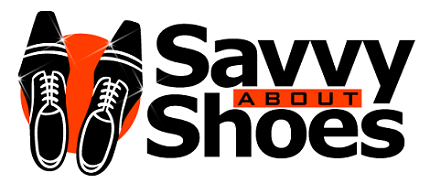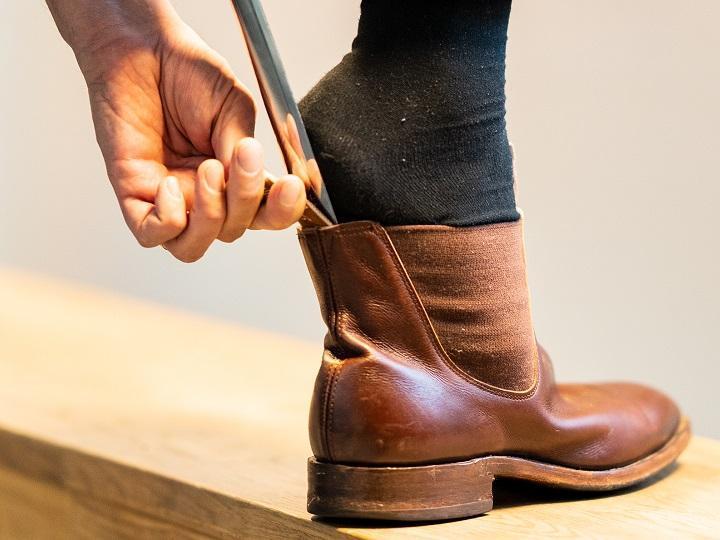I can’t think of anyone who does not know how to use a shoe horn, or, more appropriately, who does not think they know who to use a shoe horn. Interestingly enough, there are several mistakes that I have seen people do when using a shoe horn. It almost seems like they do not understand that the primary purpose of the shoe horn is to protect the back of the shoe.
How To Properly Use a Shoe Horn?
Start by inserting the shoe horn vertically in the shoe, making sure that it is flush with the back of the shoe. Next, put your foot into the shoe and allow the heel to slide down the shoe horn. Finally, just as you are about to touch the sole of the shoe with the heel, remove the shoe horn. Of course there are quite a few variations of the technique depending on the type of shoe you are putting on and the shoe horn you are using.
Before we get into that we need to answer two very important questions that relate to the technique of putting on shoes while using a shoe horn. Specifically, it is important to understand what’s the role of a shoe horn, and also when you can be sure a shoe horn is doing its job and when it is not.
Why Do People Use Shoe Horns?
The reason many people choose to use shoe horns is to help them squeeze into shoes, more often than not, while their shoe laces are still done up. Unfortunately, that simple preconception about the role of a shoe horn can create a lot of problems.
Shoe horns were developed to help protect the back of the shoe from cracking under the pressure of a full-grown man’s weight. The more you step on the back of a shoe, the worst it is going to fit and the more uncomfortable it will become.
If people kept that one guiding principle in mind, that the shoe horn is there to protect the back of the shoe, they would not allow the shoe horn to bend down crushing the shoe, and they would not put the shoe horn to the side and slide in the shoe from that angle. Both are common mistakes that I have seen more than once, even from professional shoe salesmen.
Do Shoe Horns Work?
To some extent shoe horns really do work, but they need to be used properly and for the correct type of shoes. For one thing, the laces need to be undone no matter the situation when using a shoe horn. Otherwise you will be pushing too hard against the shoe horn and it will put too much pressure on the back of the shoe.
You also need to make sure that you are using the correct shoe horn for the correct type of shoe. For example, one should never attempt to slip on a boot while using a short-handled shoe horn. The horn needs to be longer than whatever type of shoe horn you are using.
How to Use a Long-Handled Shoe Horn?
Long handles shoe horns are meant to be used while standing. They have a slight slant backward that allows a user to hold them perfectly perpendicular to the ground even if they are not a yoga master capable of turning to 180 degrees.
An alternative to the slanted shoe horn is the hook on the end of a shoe horn. I currently own the Vive Long Shoe Horn, and, as you can see, it has a hook at the end of the grip. Using the grip, you can lower the shoe horn into the shoe, fix it with your heel, and only then grab a hold of the handle and make sure that the foot is not pushing too hard against the heel of the shoe.
As a general rule of thumb, I would say that if you need to really put a lot of effort behind holding the shoe horn up right, then something is wrong in your setup. Most of the times the shoe laces are not undone all the way through. Alternatively, you have not placed the shoe horn right at the end of the shoe, but it is slightly to one side.
If both of the two rules mentioned above are meant, I would suggest that you may need orthopedic shoes. That is because shoe makers are perfectly aware that too much pressure on the back of the shoe will cause it to prematurely fall apart and they leave plenty of room for most feet to slide in effortlessly as long as the tongue of the shoe is out of the way.
How to Use a Short-Handled Shoe Horn?
A short-handled shoe horn is designed to be used from either a kneeling position or a sitting position. Either way, the body is not twisted around as much as it is from a standing position. Also, being so close to the shoe, allows you to use more power in resisting the pushing direction of the foot.
And there is one other difference: being seated you are really not using your full weight, so, if possible, you should be using a short-handled shoe horn at all times. I have written a complete post on the best shoe horns on the market today, and the small handles shoe horn has its own category, but, if you are in a hurry, the jist of it is that the Maximilian Shoe Horn is the very best of the best. I currently own 4, mostly because they are delivered in sets of 2.
How to Use a Shoe Horn with Boots?
Boots are a particularly difficult type of shoe to get on because it is not just the heel that needs to slip in, but also the leg. Most boots are designed to have the side of the boot come undone, either by use of shoe laces or a zipper. Even if that is the case you should use a long shoe horn, like the Muso Long Handled Shoe Horn , to guide your feet all the way in.
However, even while using a shoe horn, it can sometimes be very difficult to get shoes on. You should always wear very thin socks with boots, but you do need to have socks to allow the feet to slide more easily. You also need to make sure that the shoe horn is position perfectly vertical.
The sides of the boot can make assessing that quite difficult which is why I like to use the handle to just allow the shoe horn to balance itself into position. Once that is achieved you need to make sure that you are securing the shoe horn into position by forcing it back with your heel.
In conclusion, try to remember that the role of the shoe horn is to protect the back of the shoe. When using it, try to follow through with that goal and the shoes should slip on easier, and the back of the shoe will be safe as well.

